One of the challenges of gardening is finding the perfect plant for your location. Only some plants thrive through harsh summer temperatures and equally stifling spring and fall months throughout certain parts of the country. As a result, it is crucial to add heat tolerant shrubs to your landscape to withstand the high climates and humidity.
Even in colder parts of the United States, it’s common to find areas in your garden that take on more sun than others. As a result, these plants often wilt or have their soil dry out much faster than plants that receive less sun exposure.
Having plants that efficiently manage high temperatures without singeing their leaves is ideal. However, it is also critical to select plants based on their tolerance to drought conditions and how well they respond to humidity.
If you’re ready to discover the perfect plant for your climate, look no further than these incredible species.

- Remarkable Shrubs that Easily Tolerate the Heat
- Egyptian Star Flower (Pentas lanceolata)
- Blanket Flower (Gaillardia)
- Red Flash Caladium (Caladium bicolor): Heat Tolerant Shrubs with Lovely Foliage
- Common Sage (Salvia officinalis)
- Crimson Stonecrop (Sedum spurium): Hardy Succulents for Dressing Up Your Rock Garden
- French Hydrangea (Hydrangea macrophylla)
- Geranium (Pelargonium)
- Marigolds (Tagetes): Numerous Subspecies Make an Excellent Heat Tolerant Flower
- Meadowsweets (Spirea japonica)
- Lemon Verbena (Aloysia citrodora): Citrus-Scented Heat Tolerant Shrubs
- Butterfly Bush (Buddleja davidii)
- Garden Cosmos (Cosmos bipinnatus)
- West Indian Lantana (Lantana camara): A Dense Perennial for Numerous Environments
- Arrowwood (Viburnum carlesii)
Remarkable Shrubs that Easily Tolerate the Heat
Perhaps your search includes a succulent that easily withstands periods of drought, or maybe your climate requires an evergreen shrub perfect for the Florida summer heat and humidity.
No matter where you intend to propagate your specimen, there is a little something for everyone to get you started.
Egyptian Star Flower (Pentas lanceolata)
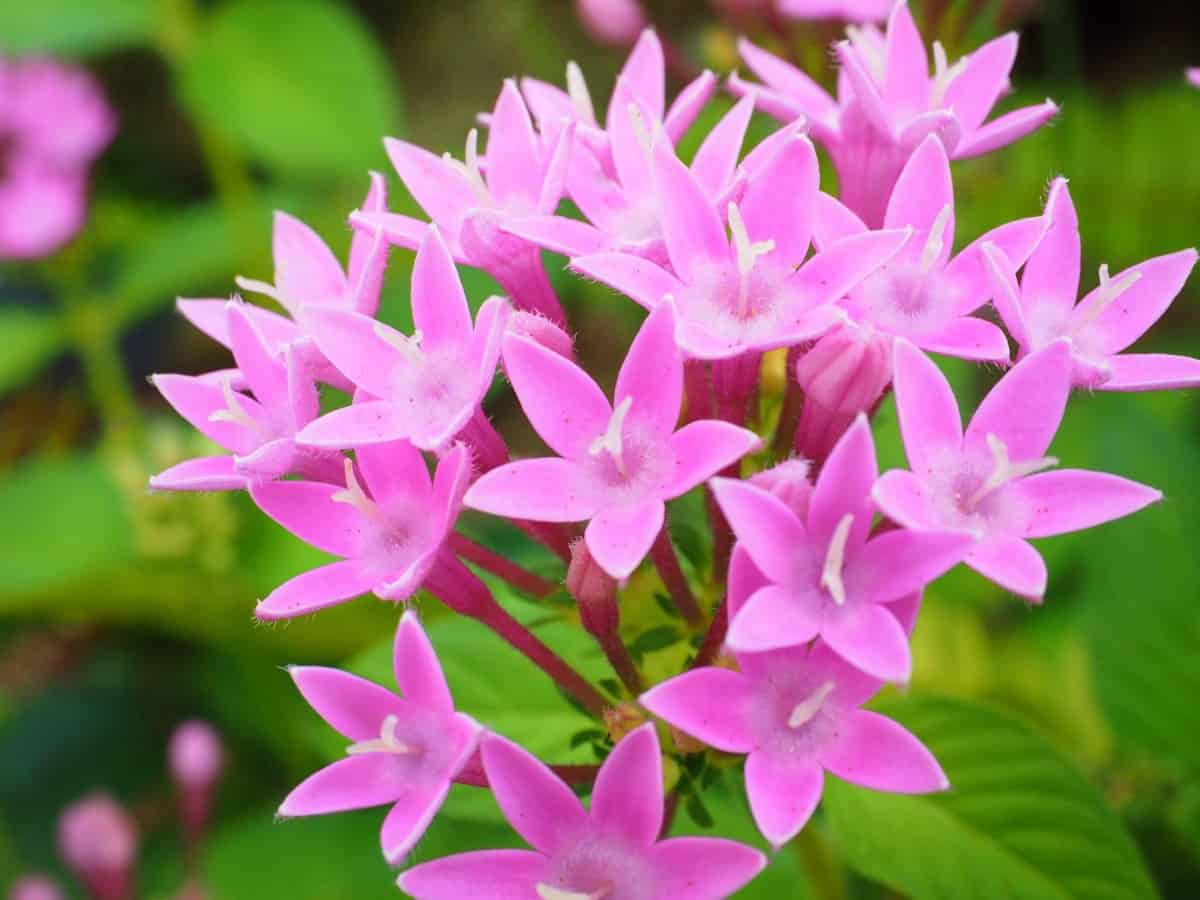
The Egyptian Star Flower gets its name from the unique star-shaped petals that branch out in lovely shades of pink, violet, or white.
These gorgeous hues pop against dark green leaves’ backdrop and make the perfect target for nectar-hungry pollinators like butterflies and hummingbirds.
The plant grows as both a perennial and an annual depending on the location. Hardy between USDA zones 10 and 11, the flower withstands some of the hottest weather conditions around.
These shrubs for full sun even bloom during the summer months when most flowers die back due to the heat. These plants possess very few problems with pests or disease and last longer when deadheaded.
Blanket Flower (Gaillardia)

One of the stunning flowers to add to your garden is also one of the most durable in heat tolerance. A native species to North and South America, the Blanket Flower not only withstands the heat but thrives in it.

This lovely little flower looks similar to a daisy and grows in environments from prairies to mountaintops. Because the plant survives so many different types of terrain, it also makes it easy to grow in different ways around the home.
Plant them in containers, as border flowers, or even in hanging baskets for vibrant rays of color. Shower them with plenty of sunlight, and they bloom throughout the summer and well into the fall.
Red Flash Caladium (Caladium bicolor): Heat Tolerant Shrubs with Lovely Foliage

Red Flash Caladium is a flower prized more for its foliage than its flowers. Its broad heart-shaped leaves overtake any flowers that bloom in the summer, displaying vibrant greens with pink and red streaks in the center.
The plant handles heat and humidity well, though it prefers indirect light when soaking up nutrients. The best time of the year to plant caladium is during the spring, preparing them for mature midsummer growth.
This flowering shrub grows only to about a foot and a half tall and thrives throughout most of the country. They can be grown either indoors and outdoors, with few minor issues of insects or disease.
Common Sage (Salvia officinalis)

Sage comes in a wide variety of species and types. However, Common Sage tends to be much more hardy than the more ornamental variations of the plant. A member of the mint family, sage not only provides a heady fragrance and lovely appeal, but it’s also edible.
These full sun evergreen shrubs thrive in USDA hardiness zones 5 through 9 and display numerous colors from blue to purple to white.
It contains high amounts of nectar, making it a beloved specimen for pollinators like bees and butterflies. In addition to the nectar, many extract honey from the plant, adding a smoky, spicy flavor to the sweet syrup.
Crimson Stonecrop (Sedum spurium): Hardy Succulents for Dressing Up Your Rock Garden

If you are looking for a plant perfect for rock gardens, then Crimson Stonecrop is the succulent you’ve been waiting for. It possesses deep green leaves, often with streaks of red that adorn the edges.
In late summer, pale pink flowers in the shape of stars form and last until the winter. In the fall, the pink shades turn into a deep, rich red. The small size of about one foot tall makes them splendid groundcover plants.
Generally low maintenance, they call for full sun growing conditions and soil that is only slightly alkaline to survive. Not only do they tolerate high levels of heat, but they also are rabbit and deer resistant.
French Hydrangea (Hydrangea macrophylla)
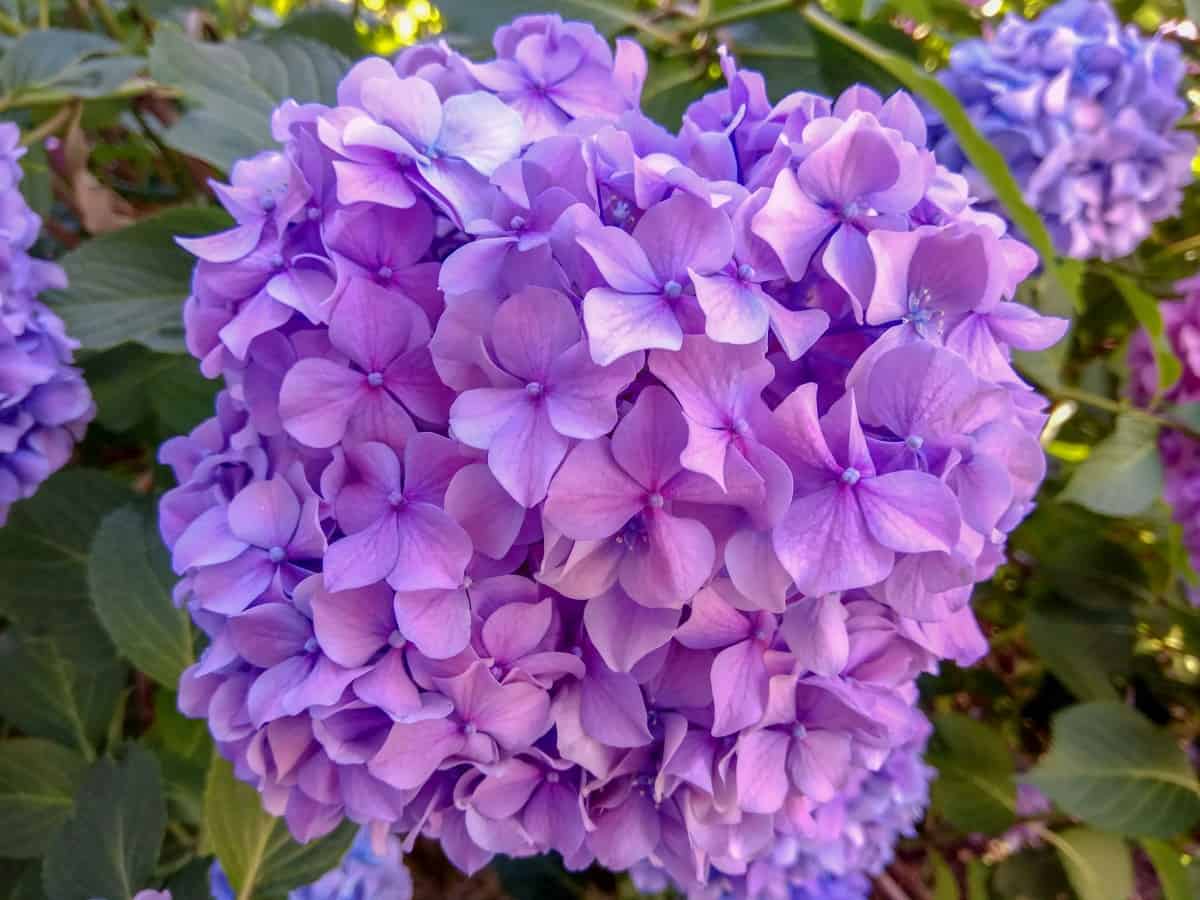
Hydrangeas are a staple in almost any garden setting across the country, but not all of them handle the heat with equal grace. With over 70 different species to choose from, it’s essential to select one like the French Hydrangea for the best results.
This variation spreads as far south as hardiness zone 9, especially when kept in shady areas. In addition to looking fabulous around any home, hydrangeas bloom anywhere from five to 9 weeks, a lengthy time to enjoy their blossoms.
These buds appear anywhere between late spring and early summer in large clusters of purple, pink, or white flowers. To keep them healthy, ensure the soil around their base stays moist and well-drained and has plenty of morning sun.
Geranium (Pelargonium)

When landing on a perfect plant from growing indoors and out, Geraniums are one of the best options. They love growing in pots and are drought loving plants, too. Their ability to withstand high humidity also makes them fantastic specimens for growing indoors.
Some geraniums emit a profusion of highly fragrant smells, ranging from chocolate to vanilla to rosy, floral aromas. Their ability to withstand heat, humidity, and give off strong scents makes them a favorite kitchen flower choice.
Marigolds (Tagetes): Numerous Subspecies Make an Excellent Heat Tolerant Flower
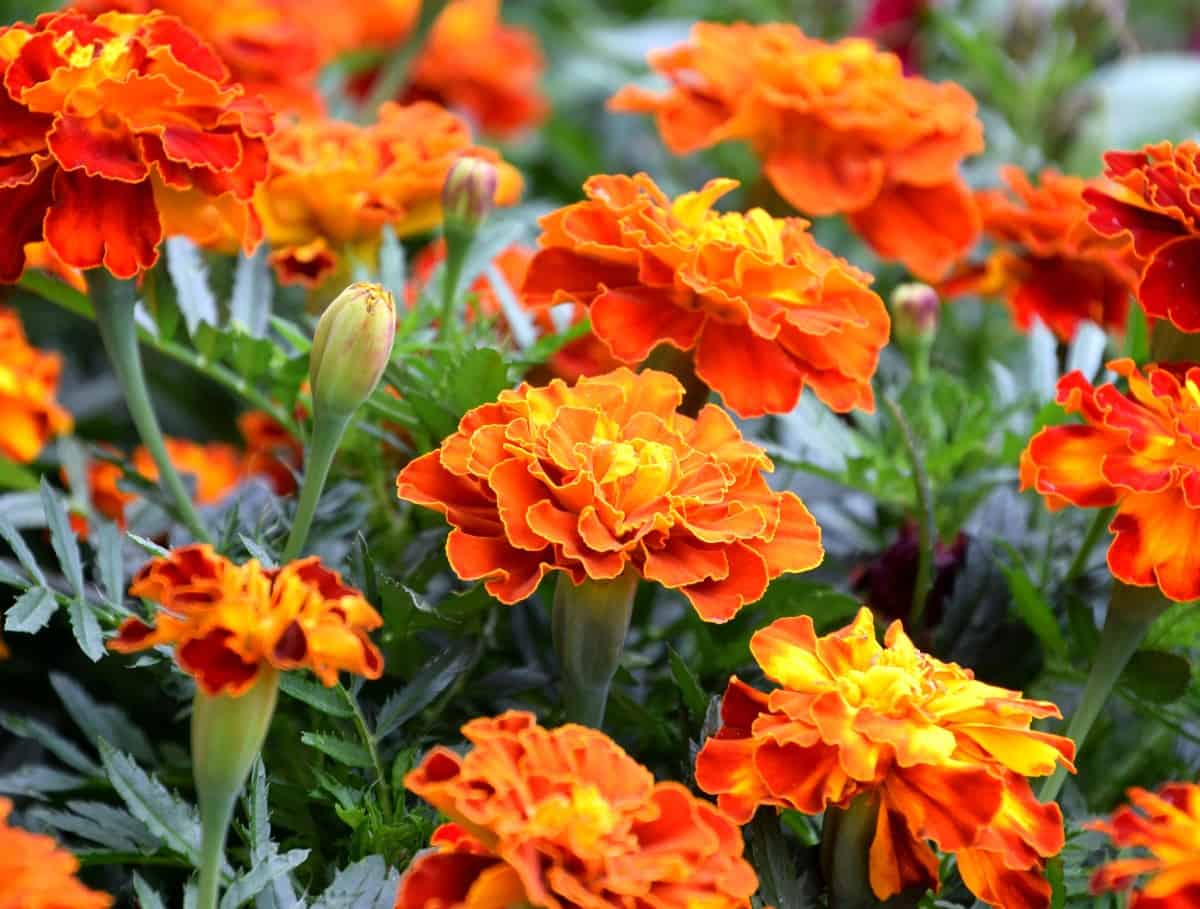
Another species of heat tolerant plants are marigolds, whose orange and yellow flowers already look like little flames in summer. The blooms appear starting in late spring and are one of the few flowers to survive the scorching summer months, as they are premium plants for full sun conditions.
They last as long as the fall and quickly grow from seeds after only eight weeks of planting. There are multiple subspecies of the plant to add to your garden for best results, such as Aztec Marigolds (Tagetes erecta) and French Marigolds (Tagetes patula).
The plant is highly susceptible to moisture-related diseases, so take precautions when watering. Let the soil dry out in between watering and never let it get soggy, as this encourages root rot.
Meadowsweets (Spirea japonica)
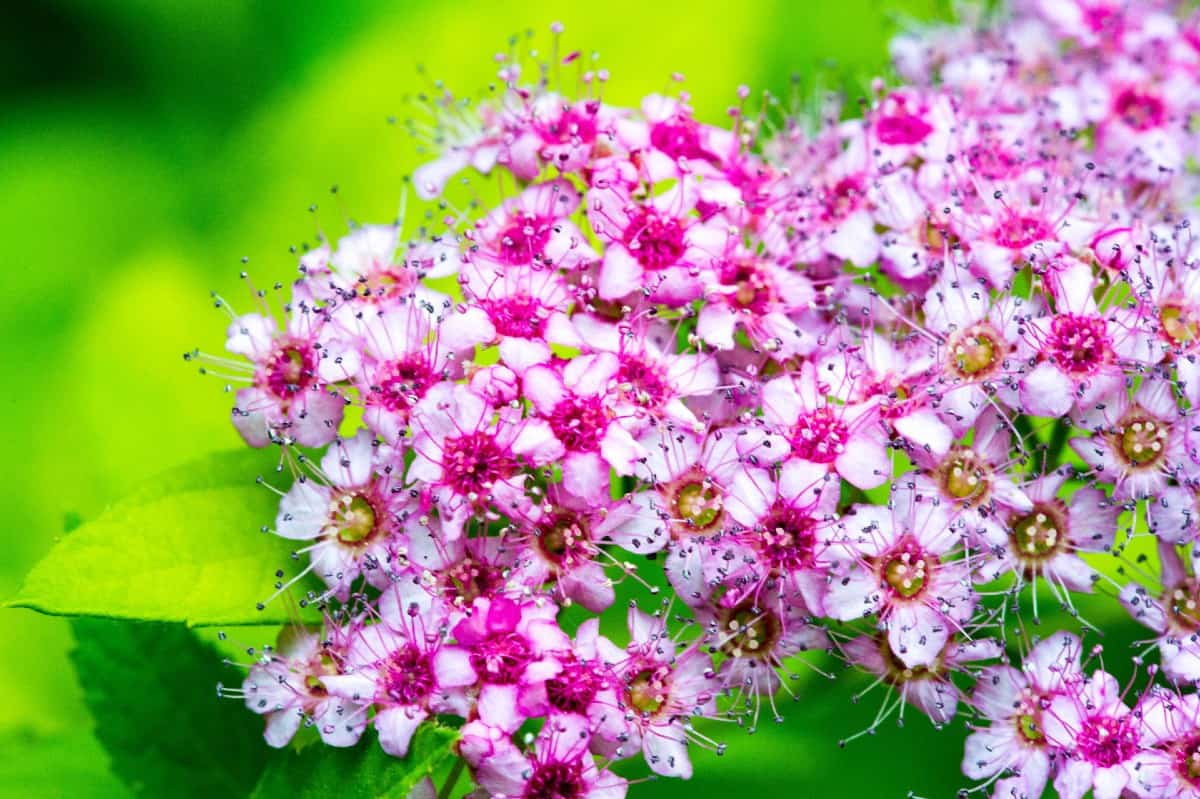
The natural environments of Meadowsweets already prepare them for enduring heat and high humidity. True to their name, they grow in wet meadows, bogs, and even along shorelines.
It releases a pleasant fragrance similar to almond and wintergreen and was used traditionally for treating aches and fever as a natural remedy. Starting in June, the plants present striking flowers that vary in color from pink to white.
While they are heat tolerant flowering plants, they love shady areas and plenty of water. One of the best ways to help them retain moisture throughout the drier months is by laying mulch around the base to regulate the temperature.
Lemon Verbena (Aloysia citrodora): Citrus-Scented Heat Tolerant Shrubs

Lemon Verbena is a beautiful plant that is native to South America. It’s tolerance to heat and the ability to provide lovely flowers and fragrances during the summer months has made it a favorite among people for centuries.
Flowers smell citrusy and were even used to enhance garments and handkerchiefs during the Victorian era.
Delicate white blooms open up in late summer, while the plant itself remains evergreen in most climates. It thrives best in hotter regions, drifting toward hardiness zones 9-11 on the USDA scale. In colder weather, it drops all of its leaves.
Butterfly Bush (Buddleja davidii)

If you love how flowering plants like lavender look, with long stalks of blooms in one cluster, then Butterfly Bush fits the bill. Colors of these flowers range from purple to pink and white, with some varieties even turning red.
True to their name, butterflies flock to these tasty flowers, enhancing their appeal for many homeowners. Butterfly Bush is hardy throughout most of the country and blooms starting in summer.
Flowers continue to flourish when deadheaded and often last until the middle of fall. Water them freely until established, then only occasionally.
Garden Cosmos (Cosmos bipinnatus)

Summer bloomers make beautiful additions, especially when all other early spring flowers begin to fade away. Garden Cosmos appears starting in the summer and lasts through the fall, providing long-lasting enjoyment.
Plants reach about 3 to 6 feet tall and present small dainty flowers. When caring for Garden Cosmos, do not overwater them.
This, along with too much fertilizer, causes more damage than good and prevents fewer flowers from emerging. Their ability to withstand heat extends to the soil, which is fine if it gets a little dry from time to time.
West Indian Lantana (Lantana camara): A Dense Perennial for Numerous Environments

Lantana is famous as an ornamental plant and has adorned homes and gardens for centuries with its vibrant beauty.
Much like its name suggests, the flower originated in the Americas and parts of Africa. Its tropical characteristics make it an ideal specimen for growing in warm regions of the country.
According to the USDA hardiness zones, Lantana does best when kept in 8-11 and frost-free climates. Flowers bloom all year long and come in a vast array of colors from orange and red to pinks and blues.
Arrowwood (Viburnum carlesii)
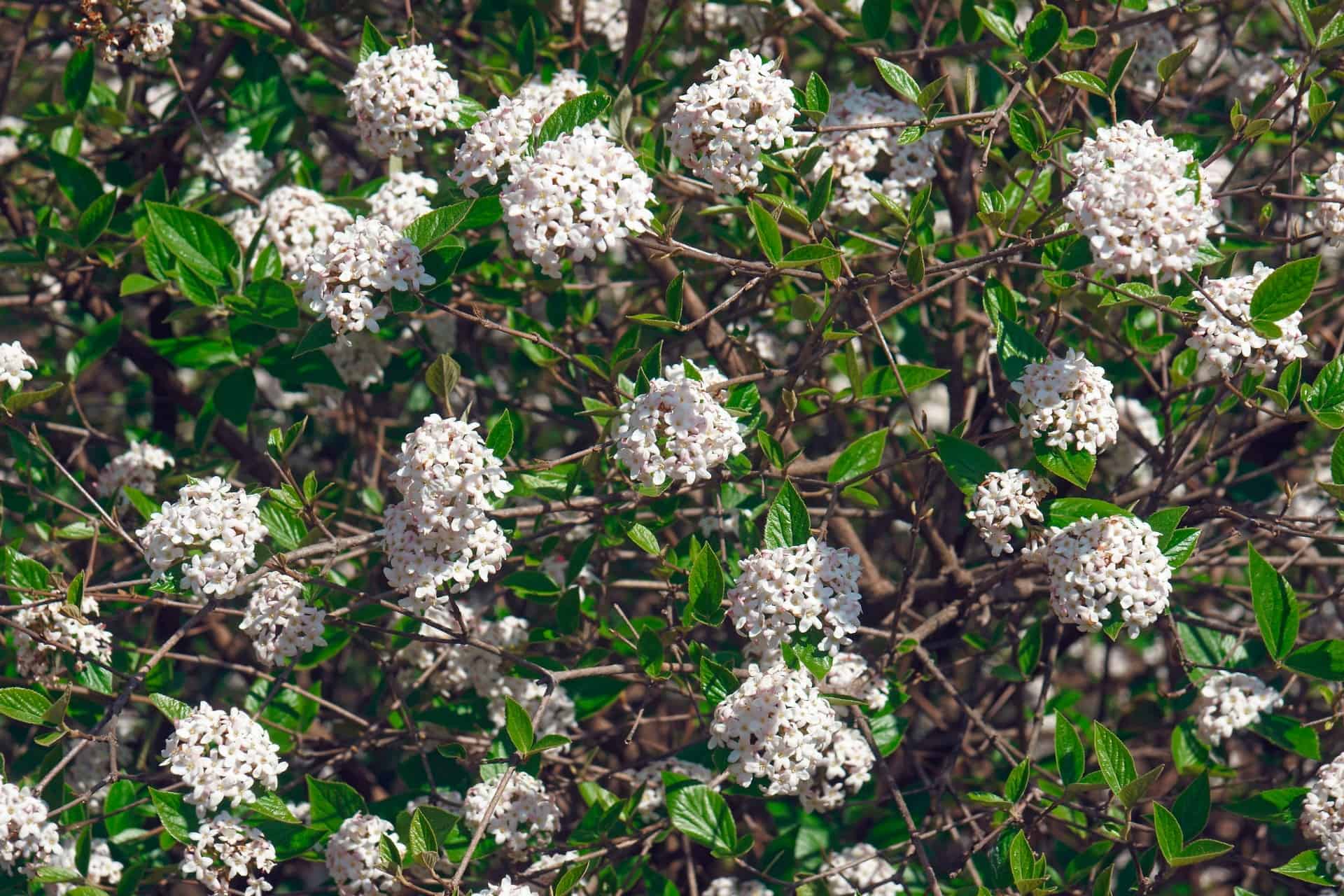
Arrowwood does so much for landscapes, including attracting wildlife, providing winter interest, and looking great throughout the year. Small blue berries appear in the fall, while its prickly branches offer shelter to little creatures in the winter.
In addition to these impressive qualities, flowers bloom in late spring and last throughout most of the summer. Flowers typically appear white and in small, tiny clusters.
Pruning the plant back is best for helping them maintain their shape and appearance. Provide them with plenty of sunlight, though some dappled shade also benefits them when the weather reaches peak heights.
These incredible flowers really take the heat when temperatures begin to rise in summer. Their ability to grow during some of the hottest months and in some of the country’s hottest parts makes them fantastic assets for any garden, which means you never have to worry about a freak heatwave killing all your plants.

If you found these too hot too handle gardening tips useful, then please remember to share your favorite heat tolerant shrubs with friends and family on Facebook and Pinterest.